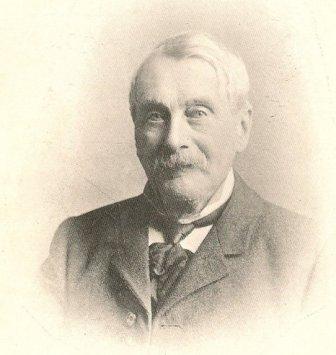Tales from Latimer (1)
 Are you always getting those mysterious emails from people who claim they’ve seen your picture on Facebook or somewhere and fancy you? Or from lonely Eastern European maidens who would like to, you know, meet a nice guy and maybe one day settle down and start a family?
Are you always getting those mysterious emails from people who claim they’ve seen your picture on Facebook or somewhere and fancy you? Or from lonely Eastern European maidens who would like to, you know, meet a nice guy and maybe one day settle down and start a family?
Or is it only me that’s such a Natasha-magnet?
Of course I never reply. It just wouldn’t work out. Quite apart from the religious and cultural differences, there’s the small complication that what they actually want you to do is send them lots of money to help them sort out an endless succession of medical and bureaucratic obstacles to a future connubial bliss which, in fact, ain’t never going to happen.
And if it did happen you’d like as not find that the svelte Russian babe in the photos turns out to be a 15-stone Nigerian called Godwin who spends most of his waking hours sat at a couple of computers in a flat in a rough part of Amsterdam wearing only a pair of Homer Simpson boxers.
‘Course it’s not always men who are the victims. Here’s a recent case which is actually heart-breaking.
The lonely hearts scam, though, is way older than the internet. There’s a splendid example from Bristol in 1842, as related by the very wonderful Mr John Latimer in is Annals of Bristol in the Nineteenth Century. It is, he says, with some relish, “a case marked by astonishing credulity on the one hand and of rarely matched baseness and treachery on the other.”
In 1841, an elderly but wealthy timber merchant named John Woolley was residing at 5 Cumberland Terrace, Cumberland Road. He had been widowed a few years and his sister-in-law, Mary Briers, was looking after him and the house.
“Woolley, however,” says Latimer sternly, “was weak-minded, and greedy; and the housekeeper, who was inordinately fond of finery and display, resolved upon gratifying her tastes by playing upon his weaknesses.”
Bryers started forging letters from a young lady who confessed she was an admirer of the elderly gentleman, adding that she had a considerable fortune, and expected to get more from a wealthy aunt. Mr Woolley’s suspicious were not aroused by the fact that he never met this young woman, nor by the fact that Bryers acted as “go-between” and nor indeed by the young lady’s repeated requests for money as she was a little financially embarrassed at the moment. It would all come good when she got her legacy, she said.
Bryers, meantime, fearing she’d get caught out, now devised another fictitious admirer. “Miss Poole King” had often seen Mr Woolley passing her house and she had a fortune of £47,000. In his excitement, Woolley stopped writing to the first girl, enabling Bryers to worm our of the complication by writing back as the same saying she was appalled at his neglect and didn’t want to hear from him ever again.
“Released from this difficulty,” says Latimer, “Woolley fell eagerly into the new web of fraud framed by his impudent relative, who obtained a gold watch from a tradesman on the credit of his name, induced him to believe that it was a present from Miss King, and secured his own watch for an imaginary exchange of love tokens. A correspondence was next started, Bryers producing letters from the lady expressing the warmest attachment – accompanied on one occasion with a request for a loan of £20 to meet an emergency, which met, of course, with a prompt response.”
Next, Miss King wrote to say that her family were appalled at the idea of her marrying him, so Woolley wrote back proposing elopement.
And this is what happened. Bryers enlisted “a girl of low origin named Mary Ann Morgan” to impersonate Miss King and the three of them went off to London, where they were married on September 12 1842. On the party’s return to Bristol, the two women took everything of value they could find in Woolley’s house and did a runner.
“About a fortnight later,” Latimer tells us, “Bryers and her tool were captured in London, and were taken before a magistrate; but Woolley, overwhelmed by the roar of popular ridicule excited by his tale, ultimately declined to prosecute, and was left to ponder for the rest of his life over his egregious credulity.”
All of which is the first of several extended plugs for a talk I’ll be doing in May about the life and times of the peerless Mr Latimer at Arnos Vale Cemetery. If I was you, I’d book a ticket right now. And one for a friend.
Filed under: Uncategorized | Leave a Comment
No Responses Yet to “Tales from Latimer (1)”